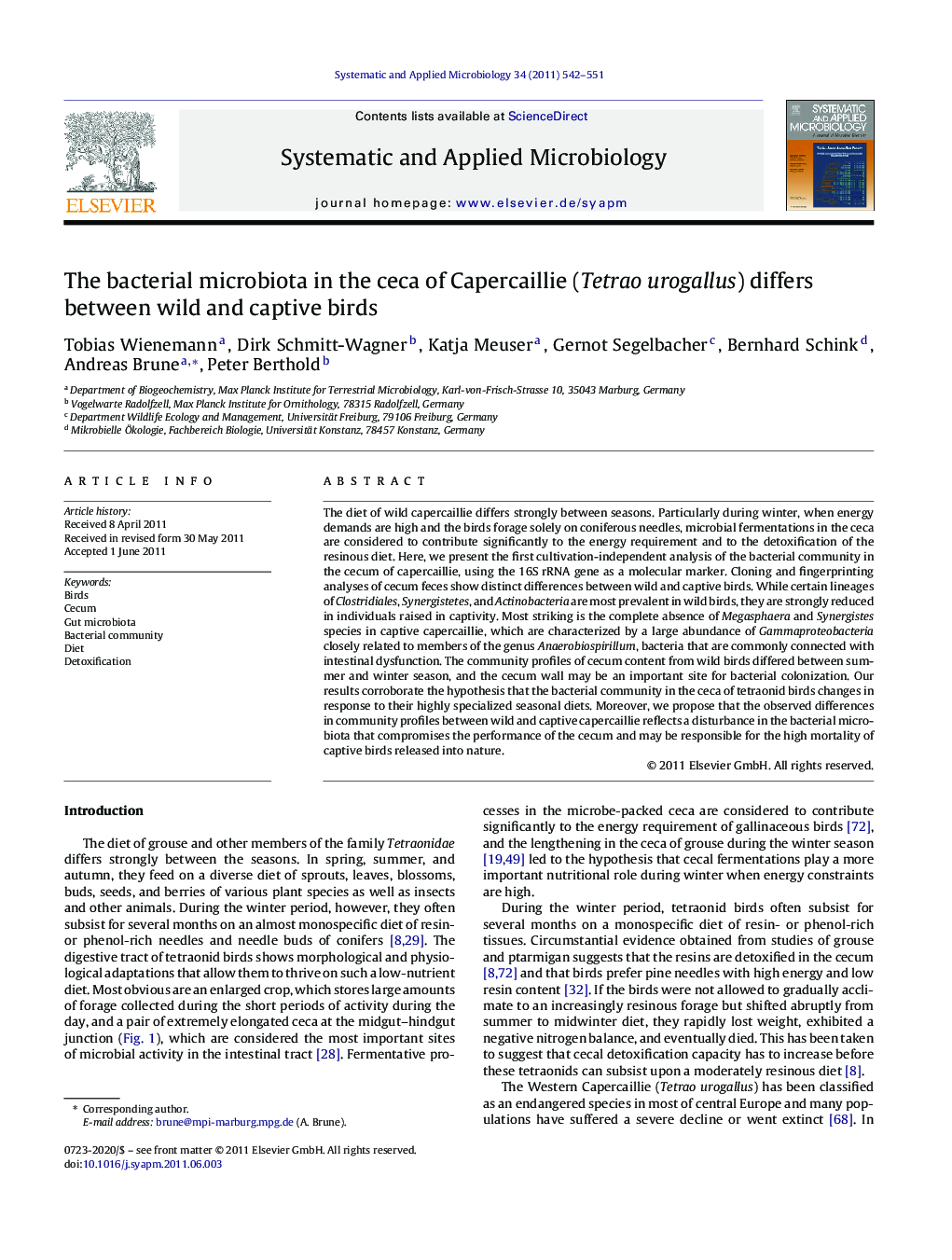| Article ID | Journal | Published Year | Pages | File Type |
|---|---|---|---|---|
| 2063860 | Systematic and Applied Microbiology | 2011 | 10 Pages |
The diet of wild capercaillie differs strongly between seasons. Particularly during winter, when energy demands are high and the birds forage solely on coniferous needles, microbial fermentations in the ceca are considered to contribute significantly to the energy requirement and to the detoxification of the resinous diet. Here, we present the first cultivation-independent analysis of the bacterial community in the cecum of capercaillie, using the 16S rRNA gene as a molecular marker. Cloning and fingerprinting analyses of cecum feces show distinct differences between wild and captive birds. While certain lineages of Clostridiales, Synergistetes, and Actinobacteria are most prevalent in wild birds, they are strongly reduced in individuals raised in captivity. Most striking is the complete absence of Megasphaera and Synergistes species in captive capercaillie, which are characterized by a large abundance of Gammaproteobacteria closely related to members of the genus Anaerobiospirillum, bacteria that are commonly connected with intestinal dysfunction. The community profiles of cecum content from wild birds differed between summer and winter season, and the cecum wall may be an important site for bacterial colonization. Our results corroborate the hypothesis that the bacterial community in the ceca of tetraonid birds changes in response to their highly specialized seasonal diets. Moreover, we propose that the observed differences in community profiles between wild and captive capercaillie reflects a disturbance in the bacterial microbiota that compromises the performance of the cecum and may be responsible for the high mortality of captive birds released into nature.
